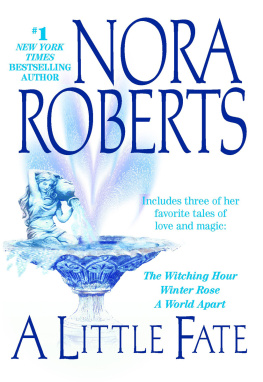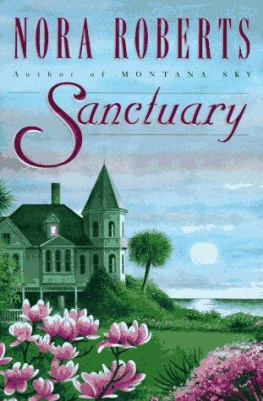

Anne-Louise Willoughby worked as a journalist in a career that spanned thirty years in Western Australia, first training as a newspaper cadet in the 1970s before moving to magazine publishing with Australian Consolidated Press. As a freelance journalist, she was a feature writer for Australian newspapers and contributing WA editor to Belle Magazine. Anne-Louise works as a lecturer and tutor in creative writing at the University of Western Australia with a particular interest in memoir and biography. She lives in Fremantle, Western Australia.

For TJW
CONTENTS
LIST OF ABBREVIATIONS
AGB | Art Gallery of Ballarat |
AGNSW | Art Gallery of New South Wales |
AGSA | Art Gallery of South Australia |
AAMWS | Australian Army Medical Womens Service |
AANS | Australian Army Nursing Service |
AIF | Australian Imperial Force |
AWM | Australian War Memorial |
AWAS | Australian Womens Army Service |
CPA | Communist Party of Australia |
HAG | Hamilton Art Gallery |
HHFC | Hans Heysen Foundation Collection |
MAETU | Medical Air Evacuation Transport Unit |
MoMA | Museum of Modern Art |
NEAC | New English Art Club |
NERAM | New England Regional Art Museum |
NGA | National Gallery of Australia |
NGV | National Gallery of Victoria |
NHFC | Nora Heysen Foundation Collection |
NLA | National Library of Australia |
NPG | National Portrait Gallery |
OWA | Official War Artist |
QAGOMA | Queensland Art Gallery | Gallery of Modern Art |
RMO | registered medical officer |
RA | Royal Academy of Arts (London) |
RAAF | Royal Australian Air Force |
RAAFNS | Royal Australian Air Force Nursing Service |
TMAG | Tasmanian Museum and Art Gallery |
VAD | Volunteer Aid Detachment |
WAAAF | Womens Auxiliary Australian Air Force |
WRANS | Womens Royal Australian Naval Service |
WRNS | Womens Royal Naval Service |
WPA | Works Progress Administration |
PREFACE
This is the story of a life propelled by an all-consuming drive to draw or paint. It is also a story of how that drive prescribed a life. Born in 1911 to artist Hans Heysen and his wife Selma, Nora was raised in the Adelaide Hills, South Australia, in a family home that provided for her natural talent from a young age and enriched her by contact with artistic and erudite visitors. She lived through periods of extraordinary change, and navigated these changes without the loss of creative integrity, and in both collusion with, and separation from, her father and his influential legacy. Nora Heysen was the first woman to win the Archibald Prize for portraiture, Australias most prestigious and widely acknowledged art prize. The prize was established by Jules Franois Archibald, owner of the influential Bulletin magazine, to support Australian artists while recognising the countrys leading citizens and, until Nora entered, winning the Archibald had remained the province of male artists for seventeen years. It would be another twenty-two before a woman won a second time.
Winning the Archibald Prize was not the only first in Heysens life. She was commissioned as Australias first woman Official War Artist in 1943, producing over two hundred and fifty works now held in the Australian War Memorial in Canberra that record the efforts of the womens auxiliary services in Australia, New Guinea and the Pacific arena during World War II. She was the sole war artist charged with this extensive brief; it was also here that she met Robert Black, a man who was to change the course of her life.
As an artist with talent, success and domestic support at a relatively young age, one might suppose that Nora Heysen would enjoy repeated successes. But due to a complex conflation of untimely interruptions by the men that held influence in her life, and due to the social constraints of the day, the outbreak of war, and her own responses to all these things, she became sidelined in an art world that was experiencing rapid change. Her choice of artistic allegiances and her unwillingness to compromise saw her fortunes falter, leaving her widely unrecognised for much of her life, despite her extraordinary talent.
Nora Heysen is a significant figure in the Australian art world. She was brought back into view in the late 1980s by art publisher and curator Lou Klepac. Her 2000 retrospective at the National Library of Australia was a triumph. Both Nora and Hans Heysens great contribution and significance are now revisited, as posthumous re-evaluation repositions them in their rightful place in the Australian collection. Nora Heysen: a portrait is my contribution towards addressing Noras life and reputation. It is just part of a process of appreciation and restitution which is also visible in current significant institutional initiatives, such as the National Gallery of Victoria joint retrospective exhibition in 2019, Hans and Nora Heysen: two generations of Australian art, and those held previously by the National Library and the Australian War Memorial in Canberra.
INTRODUCTION: NORA SPEAKS
My memory of childhood was always wanting to draw or paint. This is my earliest memory. It will be my last memory, I think, that I must put something on paper. Nora Heysen
The truck driver holds the steering wheel with relaxed confidence. She rests a large, muscular arm on the open window of the truck door, her hands encased in long leather driving gloves. She is wearing air force garb designed for the Womens Auxiliary Australian Air Forcethe first group of women, other than nurses, permitted to sign up to the recently formed womens services. Her clothes are loose and masculine in cut. An airmans peaked cap sits squarely on her head; her eyes face forward, her expression is relaxed yet purposeful. She is a professional. She wears red lipstick. She is strong, authoritative and female.
Nora Heysen painted Transport driver (Aircraftwoman Florence Miles) 1945 (AWM, plate 34) when she returned to Australia from her war artist post in New Guinea towards the end of World War II. Suffering severe dermatitis, a residual effect of the constant humidity and wet muddy environment in New Guinea, Nora was sent home to convalesce. As she recovered, she continued her commission at the Royal Australian Air Force (RAAF) bases in Cairns and Townsville in northern Queensland. While stationed there, she produced paintings that display the power and capability of her women subjects.
Next page















